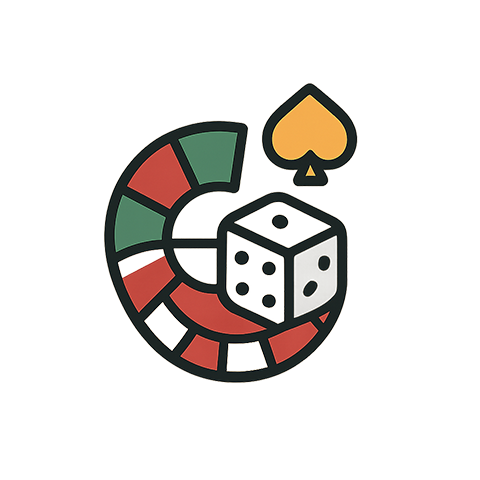
Computational Method Unlocking Edge in Modern Gambling
For decades, the world of betting has been governed by a mix of intuition, experience, and the simple mechanics of odds. Yet in recent years a quiet revolution has been reshaping how players approach every wager: the rise of sophisticated computational methods. By harnessing vast datasets, algorithmic models, and real‑time analytics, modern gamblers can now identify hidden patterns, predict outcomes with greater precision, and gain an edge that once seemed impossible. This article delves into how computational methods are transforming gambling, the tools that make it possible, and what it means for both seasoned bettors and newcomers.
From Gut Instinct to Data‑Driven Decision Making
The traditional gambler relied on gut feelings, anecdotal evidence, or a handful of statistics. A computational method flips that paradigm on its head, turning millions of data points into actionable insights. Consider horse racing: once, a bettor might have weighed a horse’s past finishes, jockey experience, and track conditions. Today, a computational model can ingest thousands of races, every jockey’s performance under varying weather conditions, and even micro‑variations in track surfaces. By applying machine learning algorithms, it produces a probability score for each horse that reflects nuances invisible to the naked eye.
- High‑frequency data collection: Live feeds provide real‑time updates on weather, track temperature, and horse fitness.
- Feature engineering: The model identifies which variables most influence outcomes—such as a horse’s recent form streak or a jockey’s preference for specific distances.
- Probability calibration: The computational method fine‑tunes predictions against historical results, reducing over‑confidence and under‑confidence alike.
The Core Technologies Behind Modern Betting
At the heart of every cutting‑edge betting platform lies a blend of statistical techniques and computational power. Below are the primary components that give the computational method its strength:
“Algorithms are the engine, data is the fuel, and experience is the navigation system.”
- Regression Models: Linear and logistic regressions help quantify relationships between variables, such as the impact of a player’s recent form on a game’s outcome.
- Tree‑Based Algorithms: Decision trees and random forests handle non‑linear interactions, essential when a single factor’s effect changes across different contexts.
- Neural Networks: Deep learning shines when patterns are highly complex, like predicting the probability of a football team’s comeback after falling behind.
- Bayesian Updating: Continually refines odds as new information arrives, making the computational method a living, breathing model rather than a static calculation.
- Monte Carlo Simulations: Run thousands of virtual scenarios to estimate the distribution of possible outcomes, providing a robust risk assessment.
Case Study: The Rise of Edge‑Based Sports Betting
Take the world of sports betting, where the stakes are high and the margin for error narrow. Traditional bettors may rely on player statistics, team records, and news reports. In contrast, a computational method aggregates data from multiple sources—player biometrics, fatigue indices, coaching strategies, even social media sentiment—to generate a composite probability.
One notable example is the use of wearable technology to monitor athletes’ heart rates and motion during practice sessions. By feeding this data into a predictive model, bettors can assess whether a star player is likely to maintain peak performance during an upcoming match. The result? Odds that reflect a nuanced reality rather than a simplistic win/loss binary.
Ethics and Regulation in the Computational Era
While computational methods grant bettors an unprecedented edge, they also raise ethical questions. Is it fair for some players to have access to advanced models while others rely on luck? Regulators worldwide are grappling with how to ensure a level playing field without stifling innovation.
“The line between skill and algorithmic advantage is blurred, but transparency must be upheld to protect all participants.”
In many jurisdictions, operators are required to disclose the existence of data‑driven odds or to offer “public” odds that are generated by transparent, audited systems. This practice helps maintain trust and prevents accusations of collusion or manipulation.
How to Get Started with Computational Betting
For the curious bettor who wants to dip their toes into computational methods, there are practical steps that can be taken without a PhD in statistics:
- Learn the basics of probability: Understand concepts like expected value, variance, and standard deviation.
- Choose a platform: Many sportsbooks now offer APIs that expose live data streams, allowing you to build your own models.
- Start simple: Begin with linear regression on a single variable, such as the relationship between a player’s age and scoring average.
- Iterate: Add more features incrementally—team composition, venue, and recent form—to observe improvements in predictive accuracy.
- Validate: Use out‑of‑sample testing to ensure your model performs well on unseen data, avoiding over‑fitting.
Many online communities now host free datasets and tutorials that can help you build basic models quickly. The key is to keep learning, test rigorously, and respect the limits of your computational method.
Looking Ahead: The Future of Computational Gambling
As hardware continues to evolve, the computational method will become even more powerful. Quantum computing, for example, promises to process complex probabilistic models at speeds unattainable by classical computers. This could lead to near‑real‑time predictions that adapt instantly to in‑game events.
Meanwhile, the integration of behavioral economics into computational models is gaining traction. By understanding how emotions, risk tolerance, and cognitive biases influence betting behavior, the models can adjust odds to balance fairness with profitability.
“The next frontier is not just predicting outcomes, but predicting human decisions in response to those outcomes.”
In the coming years, bettors who embrace computational methods will likely find themselves ahead of the curve. However, success will still hinge on disciplined bankroll management, continuous learning, and a willingness to adapt as the algorithms evolve.
Conclusion: Empowering the Modern Gambler
Computational methods have moved from the realm of academia into everyday betting strategies. By marrying large‑scale data collection with advanced statistical models, these methods transform raw information into actionable insights. While they offer a tangible edge, they also demand a new set of skills—data literacy, critical thinking, and ethical awareness.
For the modern gambler, the computational method is less about replacing intuition and more about augmenting it. With the right tools, knowledge, and a dash of skepticism, bettors can navigate the unpredictable waters of gambling with greater confidence and a clearer sense of where advantage lies. The edge is now measurable, and the responsibility to use it wisely rests in the hands of every player willing to engage with the technology.



